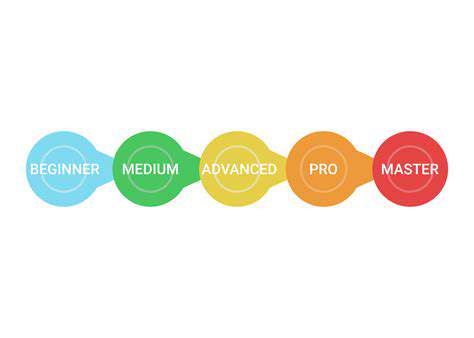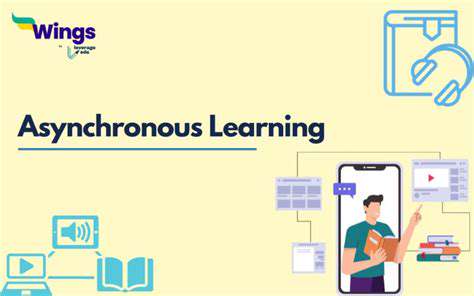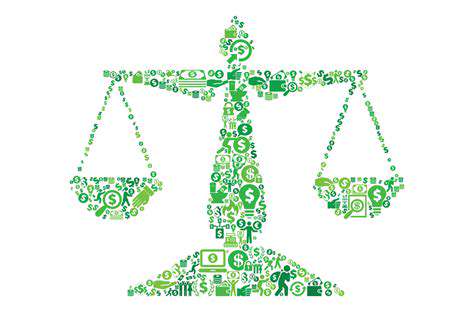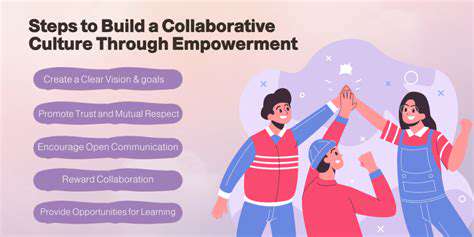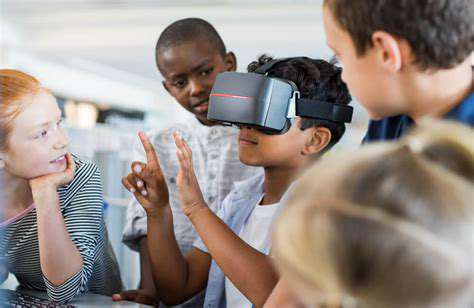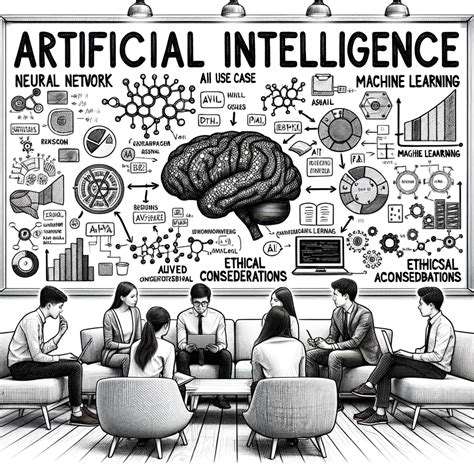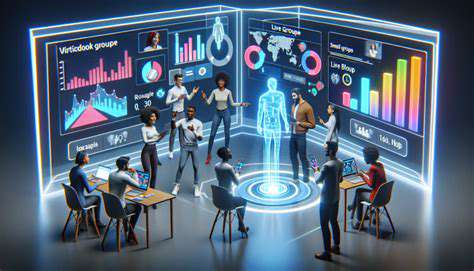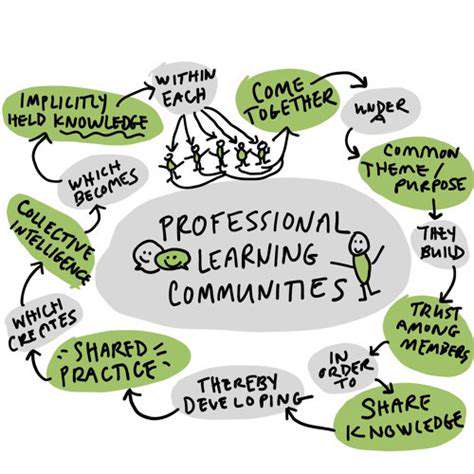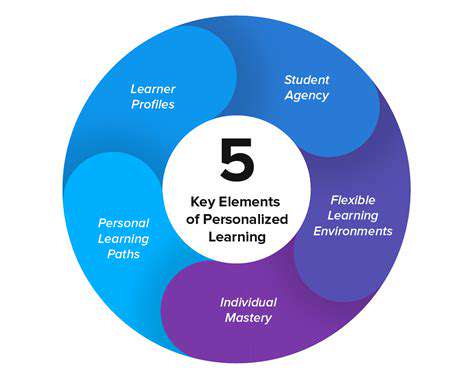Student Autonomy in Personalized Learning Pathways
The Role of Educators in Supporting Student Autonomy
Cultivating a Growth Mindset
The most impactful educators understand that intelligence isn't fixed but developed through effort. They design productive struggle experiences - challenges slightly beyond students' current abilities - and celebrate the learning process more than perfect outcomes. Their classrooms normalize mistakes as learning opportunities.
This philosophy manifests in subtle but powerful ways: praising specific strategies rather than innate ability, using not yet instead of wrong, and sharing stories of famous figures who overcame early failures. Over time, students internalize that their potential isn't predetermined but shaped by their choices and persistence.
Providing Choice and Agency
Autonomy-supportive teachers think like menu designers rather than short-order cooks. They create frameworks where students make meaningful decisions within academic parameters. A literature teacher might offer several novel options all exploring similar themes, or let students choose how to demonstrate understanding - through essays, podcasts, or dramatic interpretations.
These choices aren't arbitrary but carefully constructed to align with learning objectives while accommodating diverse strengths. The teacher's role shifts from decision-maker to option-creator and guide, helping students navigate their choices productively.
Encouraging Self-Reflection and Metacognition
Regular reflection transforms experiences into genuine learning. Some teachers begin classes with learning intentions and end with success checks, while others use weekly reflection journals. Particularly powerful are process portfolios where students curate work samples accompanied by reflections on their growth.
One innovative approach has students create user manuals for how they learn best - identifying their optimal conditions, common pitfalls, and effective strategies. This practice not only boosts self-awareness but gives teachers valuable insights for personalizing instruction.
Creating a Supportive and Inclusive Learning Environment
Psychological safety forms the foundation for academic risk-taking. In autonomy-supportive classrooms, teachers actively model vulnerability - sharing their own learning struggles and strategies. They establish norms where all voices are valued and differences are assets rather than obstacles.
This environment requires intentional community-building: morning check-ins, collaborative norm-setting, and routines that ensure all students participate. The most successful teachers balance high expectations with high support, creating what researchers call warm demander classrooms.
Promoting Collaboration and Peer Learning
Well-structured collaboration teaches students to learn from and with each other. Techniques like think-pair-share or jigsaw activities distribute expertise while developing communication skills. Peer feedback protocols teach students to give and receive constructive criticism.
Some classrooms implement expertise boards where students list skills they've mastered and are willing to teach peers. This not only reinforces learning but creates a culture where everyone has valuable knowledge to contribute.
Assessment for Learning, Not Just of Learning
Formative assessment becomes a compass rather than a scorecard in autonomy-supportive classrooms. Three-star feedback - identifying three strengths before one area for growth - maintains motivation while guiding improvement. Rubrics are co-created with students, making expectations transparent.
Some teachers implement assessment conferences where students present evidence of their learning and discuss next steps. This shifts assessment from something done to students into a collaborative process they help direct.
Measuring and Evaluating Student Progress
Assessing Learning Outcomes
Effective progress measurement in autonomous learning environments requires multidimensional tools. Beyond content mastery, educators track skills like self-regulation, collaboration, and problem-solving. Learning continuums replace binary pass/fail metrics, showing growth over time.
Some programs use badging systems where students earn credentials for specific competencies. Others implement learning exhibitions where students present work to authentic audiences. These methods capture the richness of learning that standardized tests often miss.
Utilizing Formative Assessments
Formative assessment becomes a continuous feedback loop rather than periodic checkpoint. Exit tickets gauge daily understanding, while learning logs track longer-term patterns. Digital tools can provide real-time analytics, alerting teachers when students need intervention.
The most effective formative assessments are minimally invasive but maximally informative - quick pulse checks that don't disrupt the learning flow but provide crucial navigation data for both students and teachers.
Employing Different Assessment Methods
Diversified assessment acknowledges that students express understanding differently. Performance assessments might include debates, prototypes, or service learning projects. Processfolios document the journey rather than just final products.
Some schools implement assessment menus where students select how to demonstrate mastery from multiple options. This approach maintains rigor while honoring diverse strengths and learning preferences.
Tracking Student Progress Data
Data systems in autonomous learning environments serve as dashboards rather than report cards. They track not just what students know but how they learn - their preferred modalities, persistence patterns, and help-seeking behaviors.
Effective tracking balances quantitative metrics with qualitative observations, creating holistic learner profiles. The best systems are transparent, allowing students to track and take ownership of their own data.
Analyzing Student Performance Data
Data analysis looks for growth patterns rather than static snapshots. Teachers examine not just current performance but rate of improvement, identifying students who might need accelerated challenges as well as those requiring additional support.
Some schools implement data wise protocols where teachers collaboratively analyze student work samples, looking for both individual and class-wide patterns that can inform instructional adjustments.
Providing Personalized Feedback
In autonomous learning environments, feedback becomes a dialogue rather than a monologue. Students learn to self-assess before receiving teacher input, developing internal quality standards. Feedback focuses on specific, actionable steps rather than general praise or criticism.
Some classrooms implement feedback protocols where students request specific types of input on their work. This teaches them to identify their own learning needs and seek appropriate support.
Adjusting Learning Strategies Based on Progress
Responsive teaching requires flexibility in both content and approach. When data shows a student struggling with a concept, teachers might offer alternative explanations or learning modalities. For students mastering material quickly, they provide enrichment opportunities.
The most effective teachers maintain strategy banks of alternative approaches they can deploy as needed. This nimbleness ensures all students remain appropriately challenged and supported in their learning journeys.
Read more about Student Autonomy in Personalized Learning Pathways
Hot Recommendations
- Attribution Modeling in Google Analytics: Credit Where It's Due
- Understanding Statistical Significance in A/B Testing
- Future Proofing Your Brand in the Digital Landscape
- Measuring CTV Ad Performance: Key Metrics
- Negative Keywords: Preventing Wasted Ad Spend
- Building Local Citations: Essential for Local SEO
- Responsive Design for Mobile Devices: A Practical Guide
- Mobile First Web Design: Ensuring a Seamless User Experience
- Understanding Your Competitors' Digital Marketing Strategies
- Google Display Network: Reaching a Broader Audience
